Shelby C. McClelland
@scmcclelland.bsky.social
Faculty Fellow in the School of Marine and Atmospheric Sciences (SoMAS) at Stony Brook University. Food, greenhouse gas emissions, and soil. www.scmcclelland.com
🚨 Big News!! 🚨
I am so excited to announce that I’ve recently joined the faculty at the School of Marine and Atmospheric Sciences @stonybrooku.bsky.social ! My initial position is as a faculty fellow under the SUNY PRODiG+ Fellowship Program. 1/n
www.stonybrook.edu/commcms/soma...
I am so excited to announce that I’ve recently joined the faculty at the School of Marine and Atmospheric Sciences @stonybrooku.bsky.social ! My initial position is as a faculty fellow under the SUNY PRODiG+ Fellowship Program. 1/n
www.stonybrook.edu/commcms/soma...

September 16, 2025 at 1:11 PM
🚨 Big News!! 🚨
I am so excited to announce that I’ve recently joined the faculty at the School of Marine and Atmospheric Sciences @stonybrooku.bsky.social ! My initial position is as a faculty fellow under the SUNY PRODiG+ Fellowship Program. 1/n
www.stonybrook.edu/commcms/soma...
I am so excited to announce that I’ve recently joined the faculty at the School of Marine and Atmospheric Sciences @stonybrooku.bsky.social ! My initial position is as a faculty fellow under the SUNY PRODiG+ Fellowship Program. 1/n
www.stonybrook.edu/commcms/soma...
We used a path analysis to test our hypothesis. But what we found surprised us! Plants only indirectly increased soil organic matter; their effect was entirely mediated through the soil microbial community, especially bacteria. 5/N
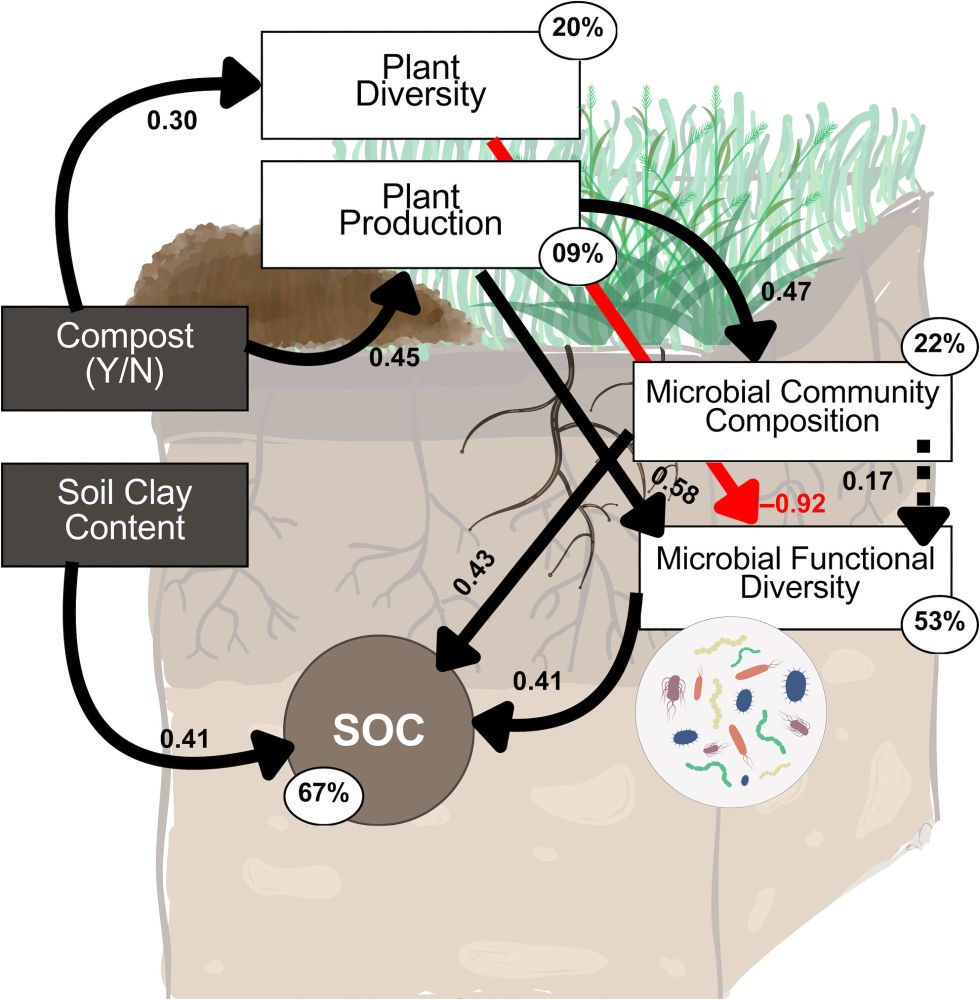
July 23, 2025 at 4:48 PM
We used a path analysis to test our hypothesis. But what we found surprised us! Plants only indirectly increased soil organic matter; their effect was entirely mediated through the soil microbial community, especially bacteria. 5/N
Plants responded immediately, both in terms of productivity and community composition. Microbes, however, were slower to respond. We only observed community differences in the final growing season. There were also differences in microbial functional diversity. 4/N
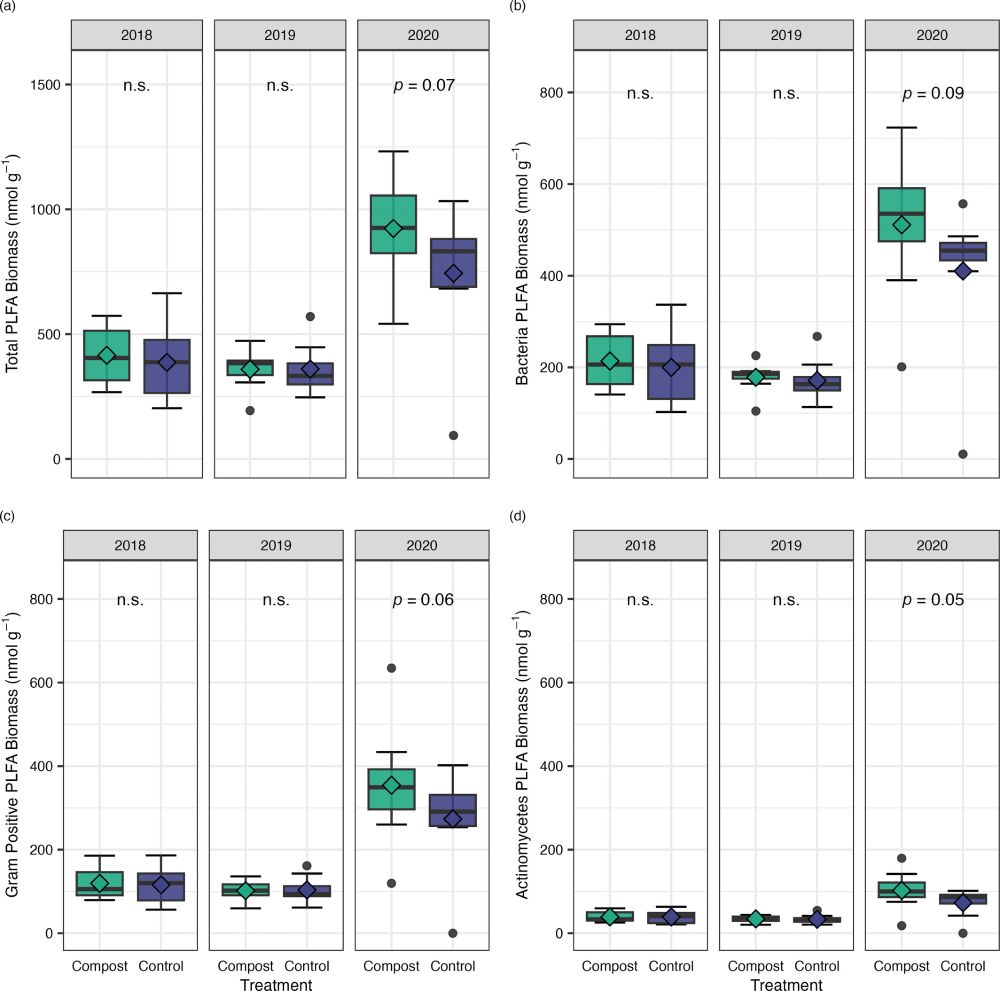
July 23, 2025 at 4:48 PM
Plants responded immediately, both in terms of productivity and community composition. Microbes, however, were slower to respond. We only observed community differences in the final growing season. There were also differences in microbial functional diversity. 4/N
Over three growing seasons in northern Colorado, we measured plant growth and diversity, microbial community composition and function, and soil carbon. We hypothesized that plants and microbes jointly contributed to the soil carbon response.
What did we find? 3/N
What did we find? 3/N

July 23, 2025 at 4:48 PM
Over three growing seasons in northern Colorado, we measured plant growth and diversity, microbial community composition and function, and soil carbon. We hypothesized that plants and microbes jointly contributed to the soil carbon response.
What did we find? 3/N
What did we find? 3/N
What’s driving these outcomes? We used explainable machine learning to show that win-win outcomes are more likely in soils with higher clay content and lower initial soil nitrogen availability. Identifying these conditions helps us create a clearer decision-framework for adoption on farms. 6/N
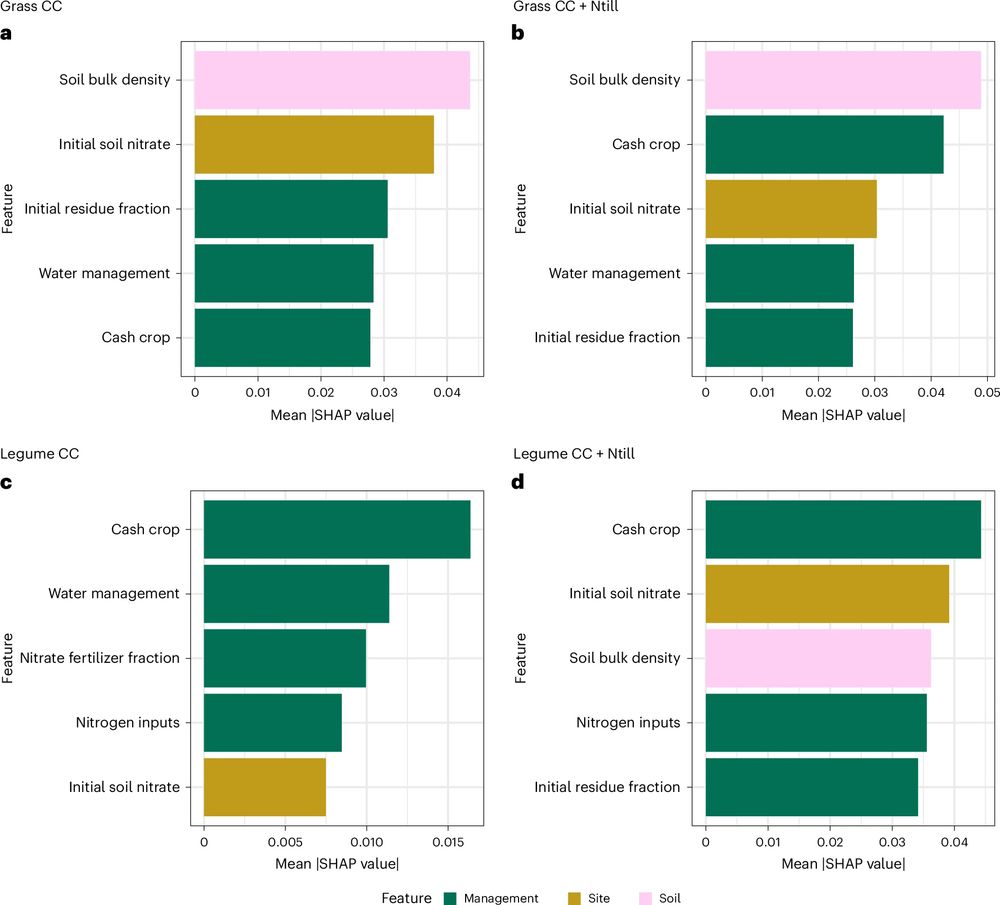
May 19, 2025 at 2:18 PM
What’s driving these outcomes? We used explainable machine learning to show that win-win outcomes are more likely in soils with higher clay content and lower initial soil nitrogen availability. Identifying these conditions helps us create a clearer decision-framework for adoption on farms. 6/N
One of our key findings is that win-win outcomes from adopting these practices are not as common as we once thought. Our analysis shows that it is difficult to maximize GHG mitigation and crop yield benefits, especially over longer time horizons, i.e., 2100. 4/N
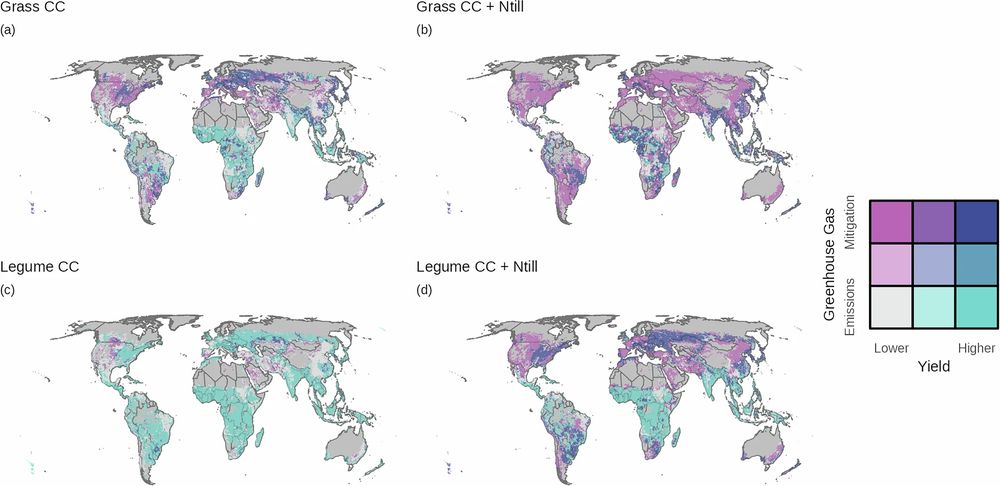
May 19, 2025 at 2:18 PM
One of our key findings is that win-win outcomes from adopting these practices are not as common as we once thought. Our analysis shows that it is difficult to maximize GHG mitigation and crop yield benefits, especially over longer time horizons, i.e., 2100. 4/N
Can 2050 cattle CH4 mitigation targets be met through intensification and mitigation technologies? Are these strategies enough to reduce CH4 without lowering consumption of meat and milk?
Come see me at my poster during #AGU24 (GC13L-0336) on Monday, Dec. 9 from 13:40-17:30 EST to find out!
Come see me at my poster during #AGU24 (GC13L-0336) on Monday, Dec. 9 from 13:40-17:30 EST to find out!
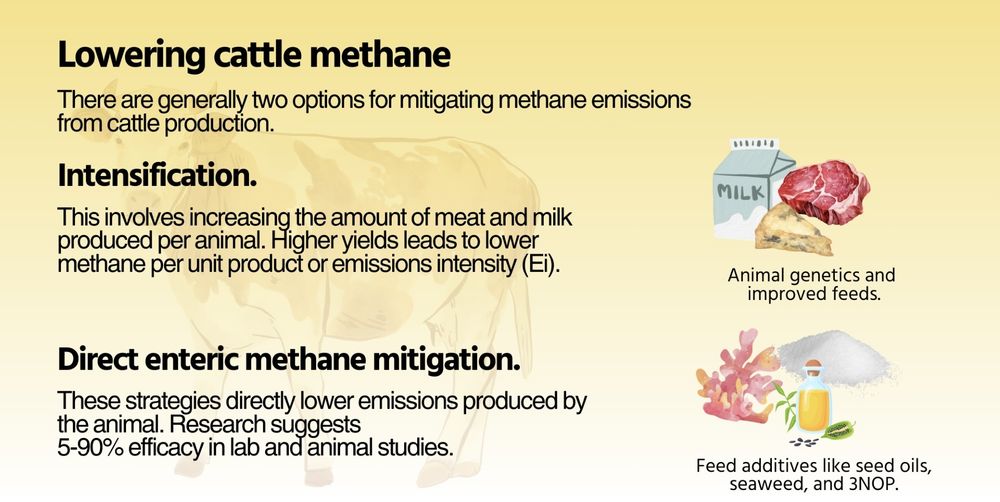
December 6, 2024 at 10:47 PM
Can 2050 cattle CH4 mitigation targets be met through intensification and mitigation technologies? Are these strategies enough to reduce CH4 without lowering consumption of meat and milk?
Come see me at my poster during #AGU24 (GC13L-0336) on Monday, Dec. 9 from 13:40-17:30 EST to find out!
Come see me at my poster during #AGU24 (GC13L-0336) on Monday, Dec. 9 from 13:40-17:30 EST to find out!

